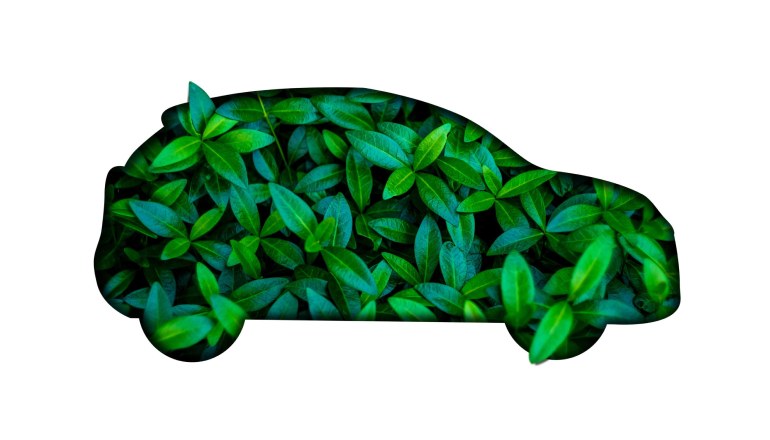The automotive and auto ancillaries industry in India contributes $70 billion or 2.1% to the national GDP, and employs 5 million people.
While the sector accounts for 4.5% of India’s merchandise exports, it is also responsible for 1.4% of the country’s annual greenhouse gas emissions. Implementing sustainability priorities could help India achieve net-zero emissions.
These are the findings of a new The Automotive Component Manufacturers Association of India (ACMA)-McKinsey study titled: Mobility 360° – Sustainability for competitiveness: A perspective on sustainability in the automotive sector.
OEMs worldwide set upstream decarbonization targets, requiring suppliers’ interventions, especially for Scope 3. India’s automotive companies commit to decarbonization, with use-phase emissions potentially dropping as electric vehicle adoption rates rise.
Key findings:
- Sustainability is a priority for most Indian OEMs
- Controlling Scope-1 and -2 emissions primary focus
- Encouraging suppliers on sustainability themes to reduce Scope-3 upstream emissions
- Many OEMs are adopting targets, measuring and tracking key performance indicators and disclosing ESG information
- While 100 per cent disclosure on ESG reports is still some way off, the journey has begun
Some stats:
- 3/4 OEMs list sustainability among their top 5 business KPIs
- 2/4 OEMs are working with suppliers to change designs for circularity
- 3/4 OEMs disclose ESG information in their annual report/BRSR report
- OEMs are already rolling out RFQs incorporating decarbonization targets
Indian OEMs are currently where EU players were a few years ago OEMs’ demand for sustainable operations may suddenly change as policies change. Indian suppliers could kick off efforts to be better prepared for these changes, to become preferred suppliers for OEMs in the future, the authors noted in the report.
Offense vs defense:
Playing defense in the global sustainability push can lead to a growing capital cost, declining market share, and reactive mode. On the other hand, companies can play offence, resulting in a 20-30% valuation increase and increased strategic distance from competitors. This strategy relies on five drivers:
- Chasing new business opportunities: Companies could build new green businesses by tapping into existing assets, capabilities and relationships.
- Targeting sustainability qualification-led–led growth: Offering green products that match customer expectations (e.g., green packaging) and requirements (e.g., carbon neutral steel) could lead companies to command a higher premium in the market.
- Achieving sustainability-led cost reduction: Thoughtful use of resources such as energy, water, waste and raw materials could help improve resource efficiencies.
- Improving employee productivity, well-being and morale: Companies could implement a holistic strategy for employee engagement to cut down attrition, boost sales productivity, and control absenteeism as employees feel rejuvenated and inspired by their organization.
- Growing valuation impact (equity): A compelling sustainability story and credible strategy could drive up valuation and expand multiples.
Material circularity, renewable energy, decarbonization:
Material circularity in the automotive sector can increase the industry’s top line by 10-20%, reduce costs by 5-10%, and decrease CO2 emissions by 50-70%. India’s automotive sector is promoting circularity due to policy and regulatory support, high primary material prices, and increased carbon markets. Recycled materials require less energy and reduce geopolitical risk.
The report noted that auto-component manufacturers in India primarily rely on electricity for manufacturing and assembly processes, accounting for 90% of their energy needs. However, a shift to renewable energy sources is crucial as grid electricity is the primary emission source. Between 2019 and 2022, thermal sources accounted for 74% of the total electricity generation mix. Solar and wind energy accounted for 11% of the mix in 2022. Alternatives for energy decarbonization include behind-the-meter solar, captive renewable energy access, and energy efficiency improvements. Companies can also consider gas-based, bio-mass-based, solar, hydrogen, or electric boilers.
Respondents from the auto suppliers segment indicated new business opportunities, sustainability qualification-led growth and sustainability-led cost reduction as the three most relevant themes.
The journey of automotive companies and their suppliers to reduce emissions calls for a focus on two big themes.
- A concerted effort towards energy decarbonization by mapping the greatest sources of emissions (electricity, steam, backup power, etc.) and finding scalable, cost-efficient alternatives to these.
- A quest to attain material circularity – with sound decisions about material sourcing, product design, process selection, and associated logistics management to ensure an overall sustainable value chain for automotive companies.
The role of the stakeholders:
Sustainability is becoming mandatory for operating licenses, but implementing it requires industry alignment, cross-value chain partnerships, and collaboration with stakeholders. The government can support this by strengthening reporting regulations, introducing incentives, tax benefits, and grants, and promoting circular-economy principles. Automotive industry bodies can create a scalable sustainability framework, drive capability-building programs, and facilitate collaborations. OEMs can support domestic suppliers by setting ambitious decarbonization targets, adopting renewable energy options, and designing products for circularity. Suppliers can be at the forefront of this transformation by moving sustainability closer to their business priorities, investing in energy transition initiatives, and working with OEMs to drive circularity.

